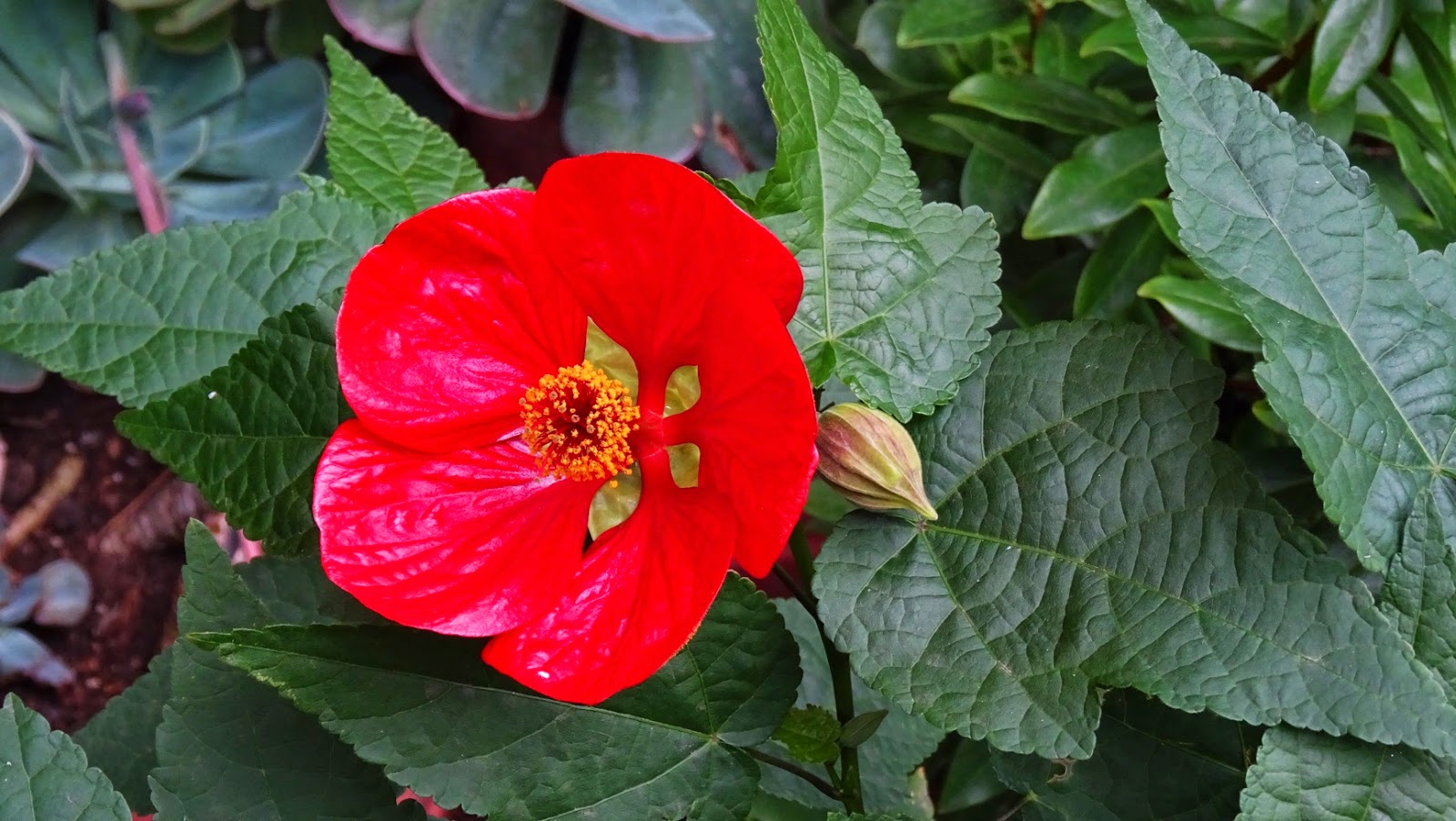Abutilons or Chinese lanterns are closely related to hibiscus, and most of the hundred or so species have pendulous, hibiscus-like flowers. Cultivars produced by hybridising some of the South American abutilons have all been placed in one group known as Abutilon x hybridum, and these are the ones most commonly grown in Australian gardens. They have a wispy, delicate form and colourful, lantern-shaped flowers. For gardeners who prefer plants with a more dense habit, new compact varieties are also available. This compact abutilon is growing very happily in a large pot on our porch.
They are evergreen shrubs with attractive maple-like leaves and an open, pendulous habit. They grow to about 2-3 metres tall (or 50-100 cm if a compact variety). Flowers are produced in September to December, but they spot flower at other times. Flower colours include white, pink, red, yellow, orange and salmon. Abutilons grow well in most parts of Australia, except for the very cold mountain zones. In inland areas be sure to water well and keep protected with mulch. In hot inland climates abutilons appreciate some light shade.
A full sun position is best, but abutilons will also flower in part shade. They like a rich, well drained soil and a cool root run. Water well and mulch. Avoid heavy feeding as abutilons are inclined to produce foliage at the expense of flowers. Light prune to shape toward the end of winter in frost free gardens. Leave until early spring in frost-prone areas. They can become untidy and leggy like hibiscus. As abutilons are members of the Malvaceae family, they are also subject to attack by hibiscus beetle and metallic flea beetle. These pests make holes in leaves and flowers and are difficult to control with pesticides.
This post is part of the Floral Friday Fotos meme.




They make leis with abutilon in Hawaii. Tom The Backroads Traveller
ReplyDeleteSuch a vibrant flower!
ReplyDeleteThese are some of my favorite blooms. The color is so bright and cheery.
ReplyDeleteThese are very pretty.
ReplyDeleteThese are wonderful and, indeed, so similar to hibiscus... Good to see!
ReplyDelete